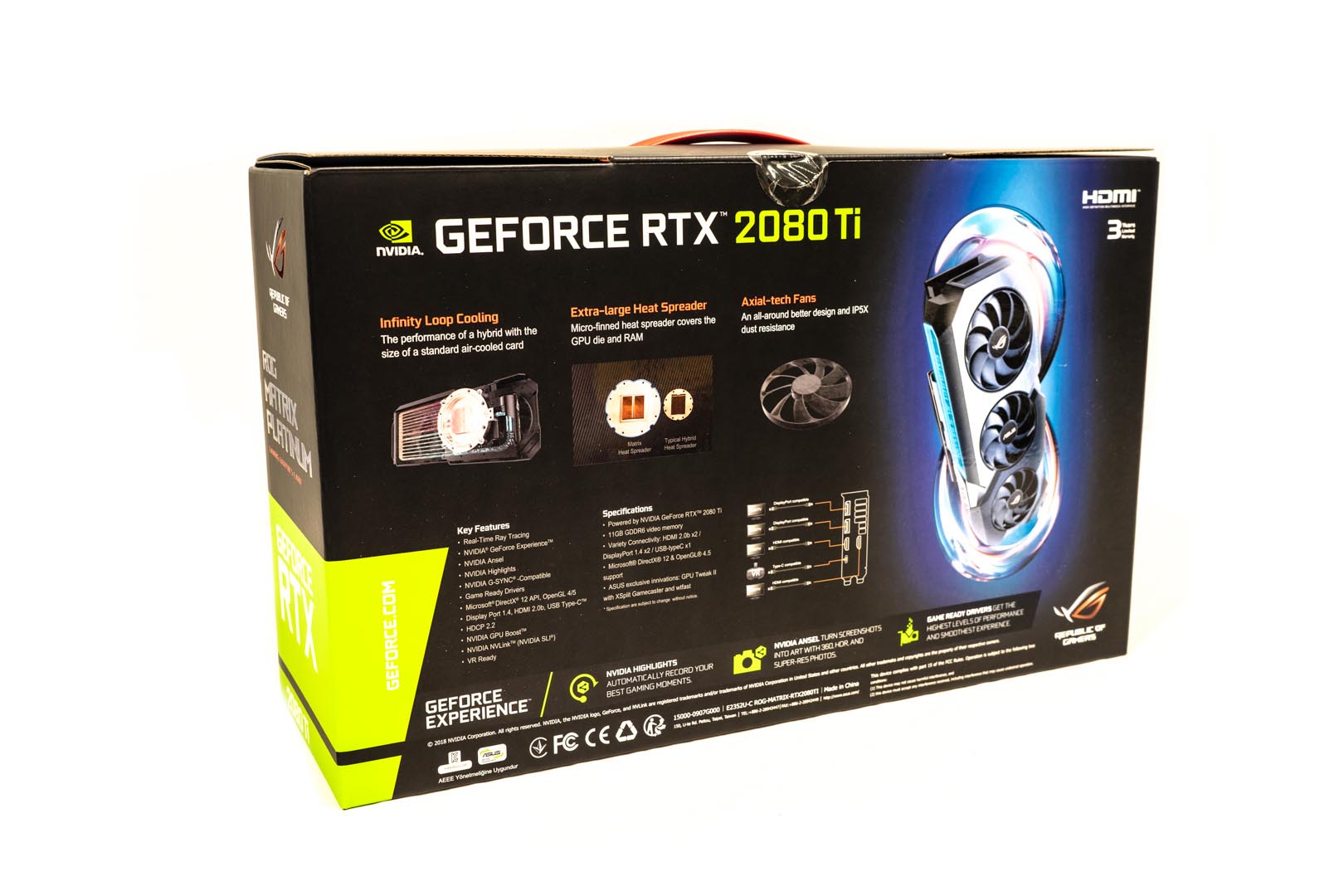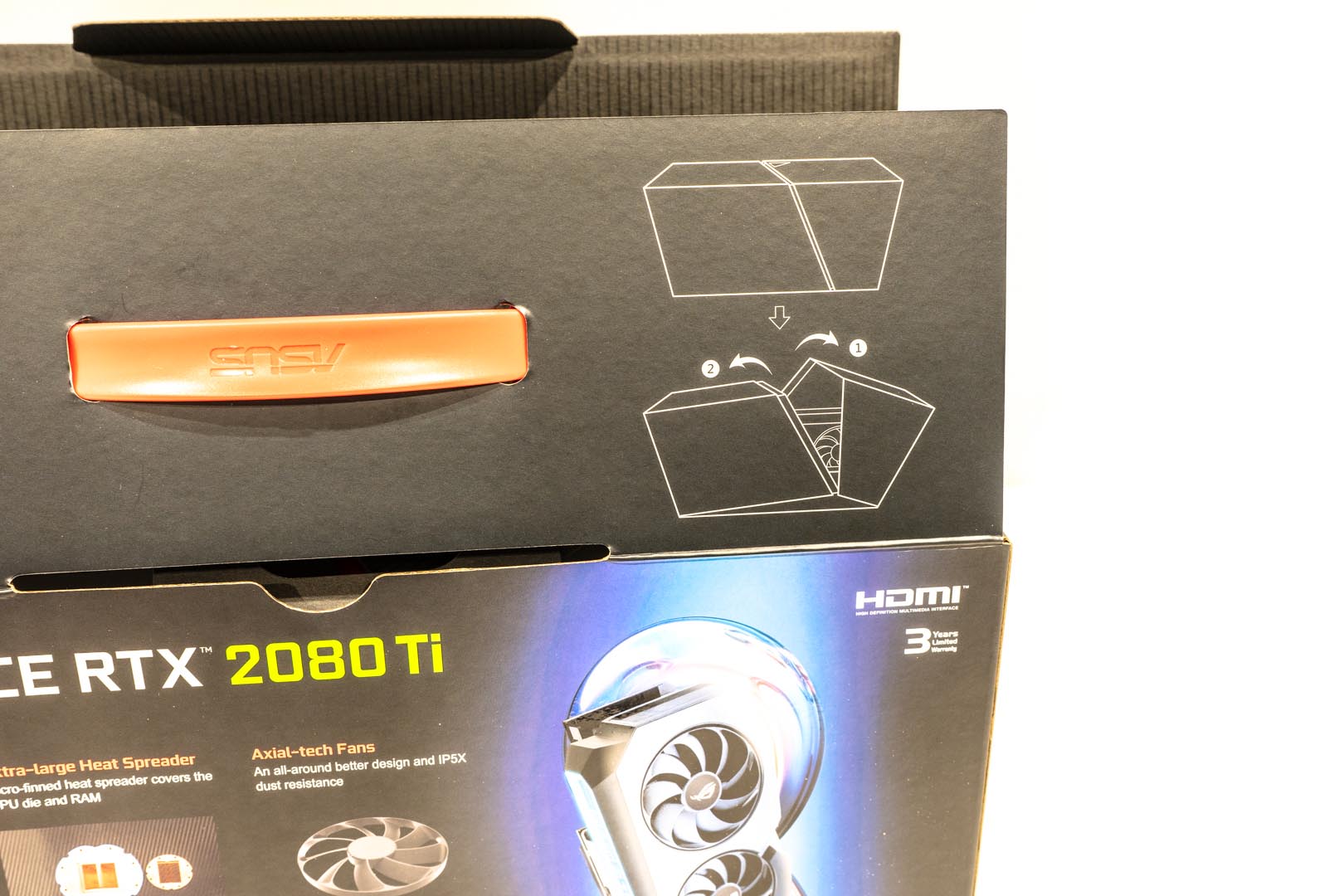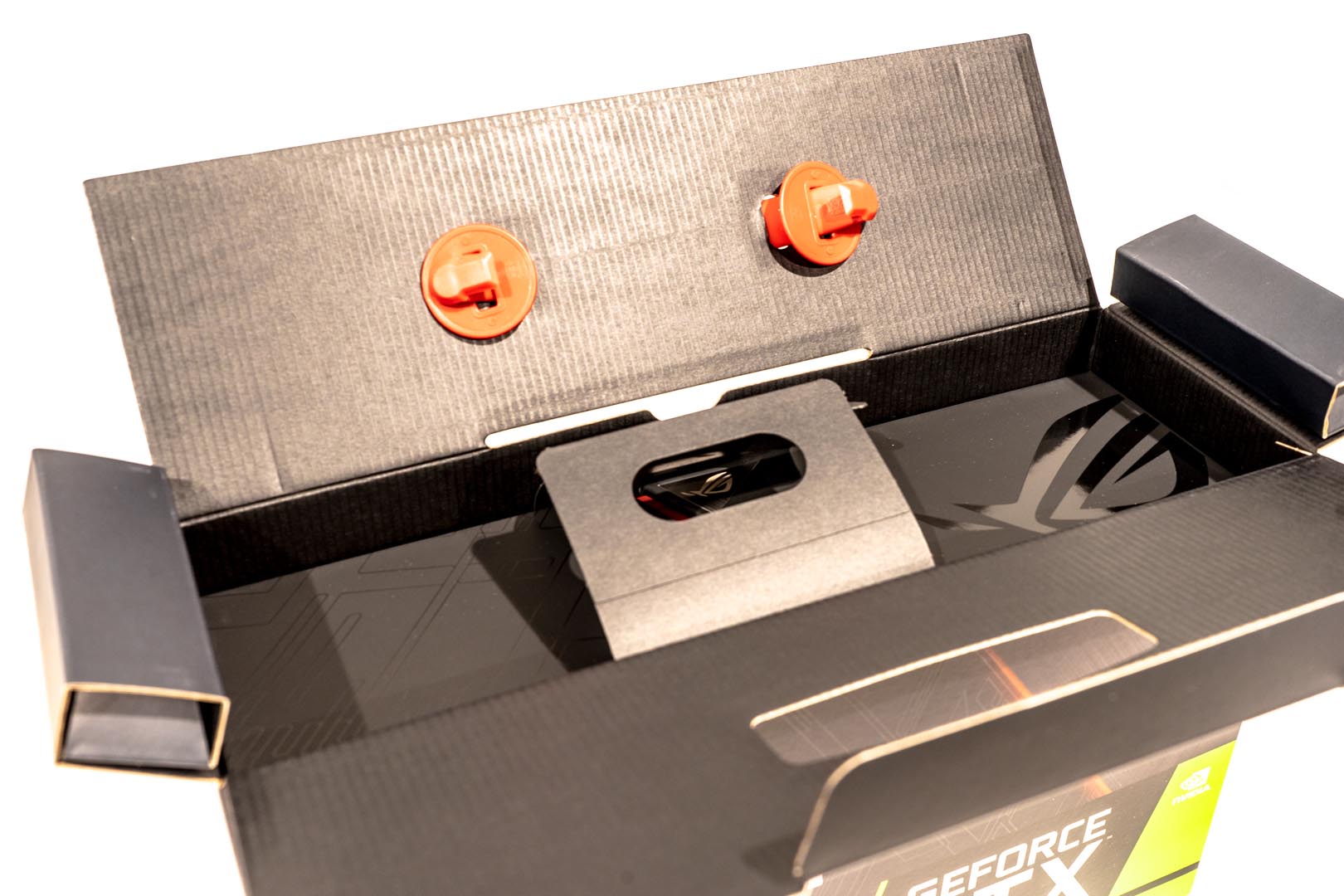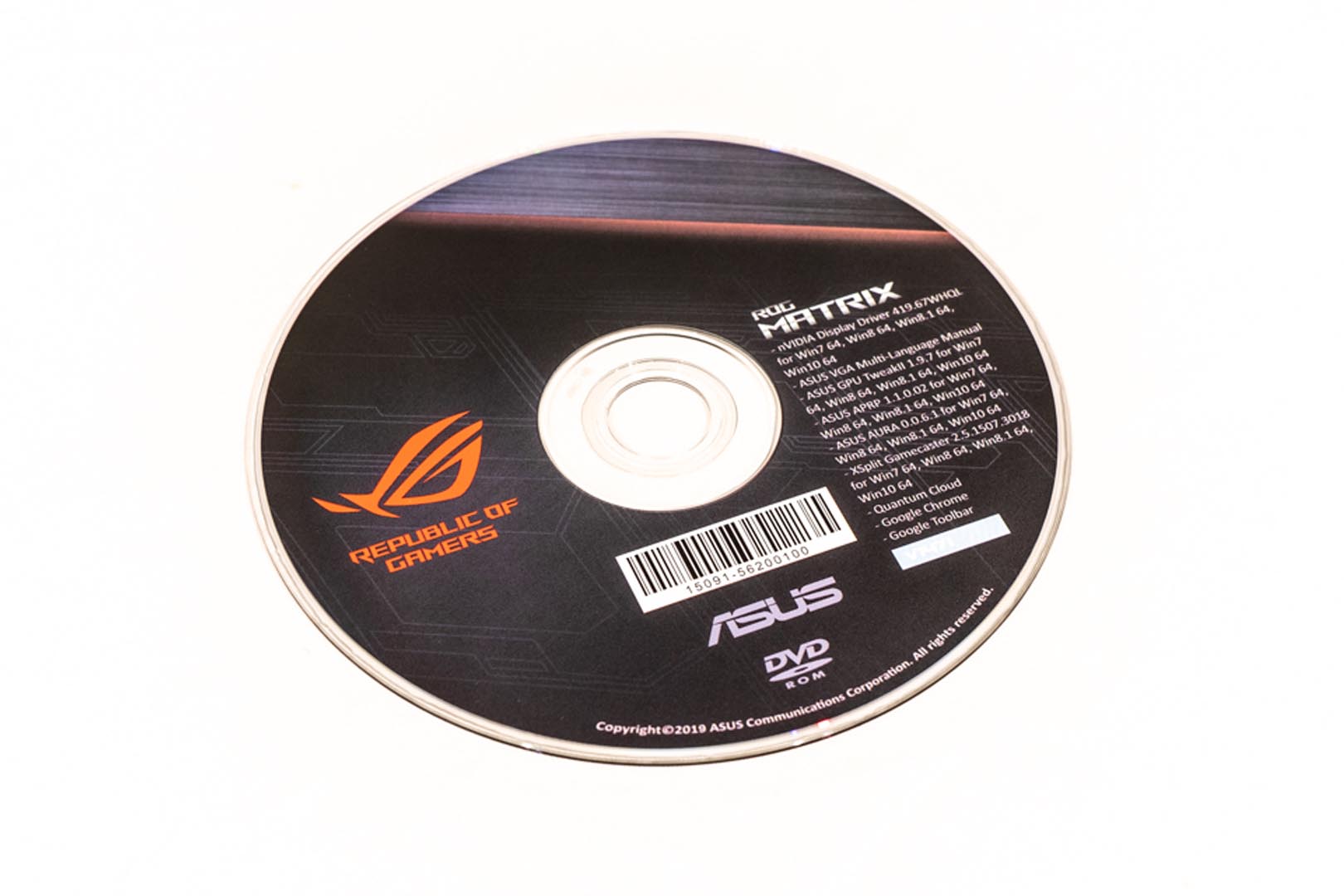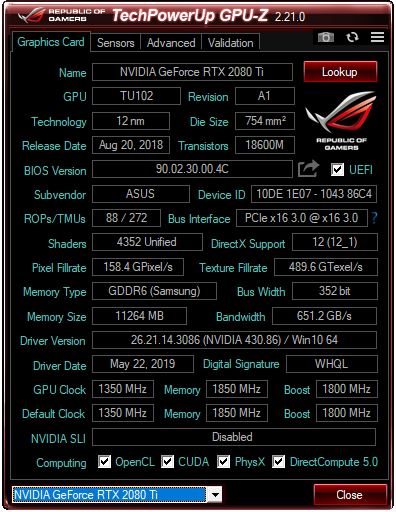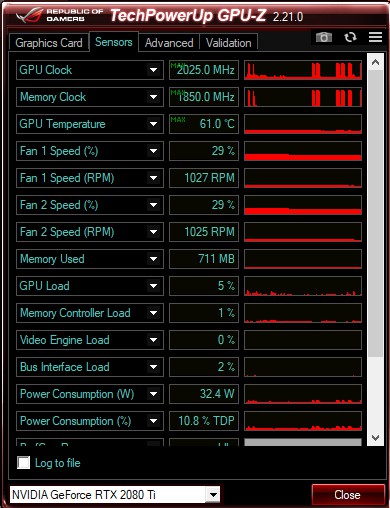A few days ago, ASUS sent us the latest water-cooled graphics card – the much anticipated ROG MATRIX PLATINUM 2080TI P11G. This card uses an integrated water-cooled system, it has no exposed radiator, and the design is very avant-garde. According to ASUS, the MATRIX card uses a hand-picked chip and an Elite bios, meaning you are guaranteed maximum overclocking performance. According to ASUS, the MATRIX 2080TI is the best 2080TI graphics card in the market. So let’s take a quick look.
The Package Appearance
The internal card package, full of ROG elements
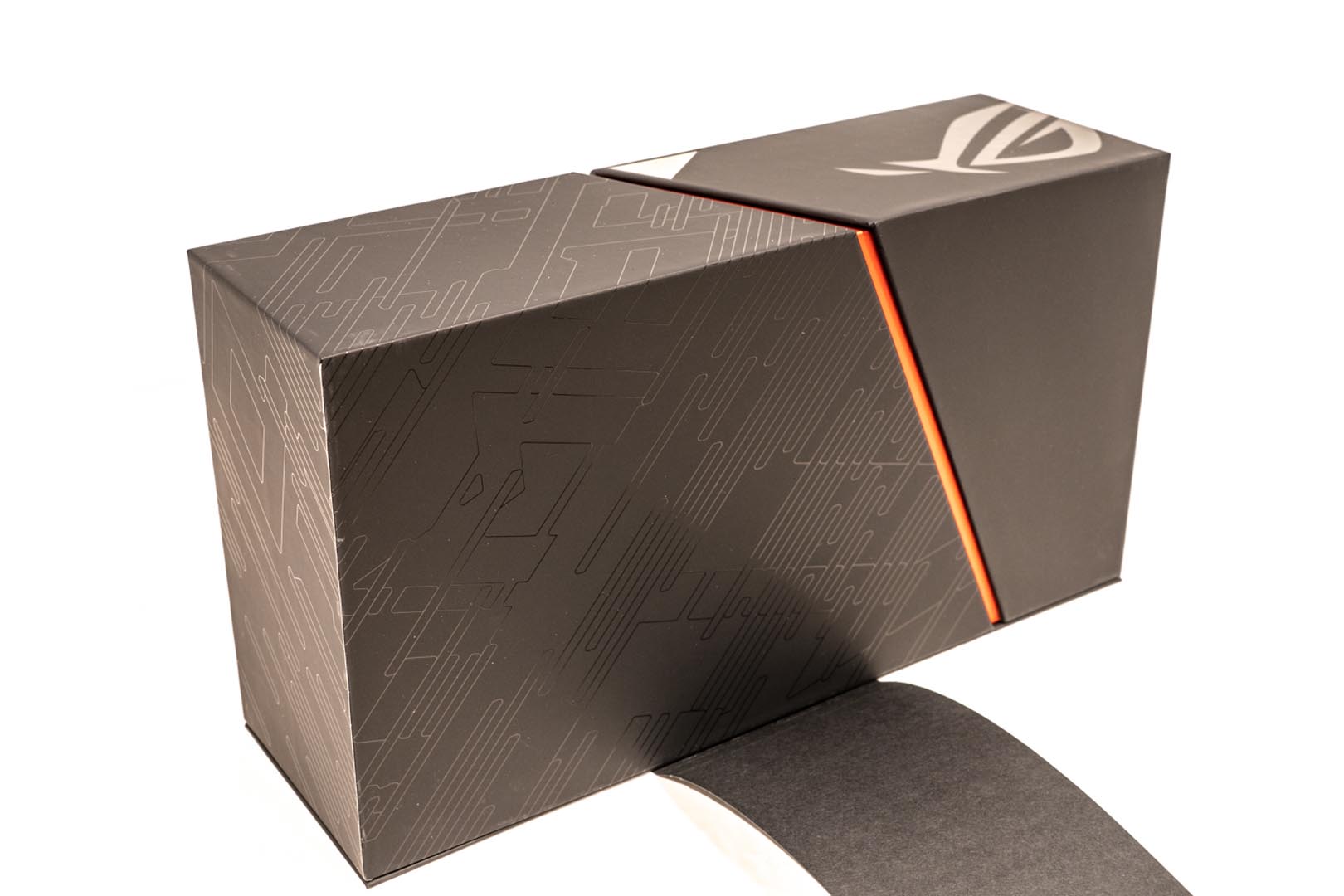
The package has a very unique unboxing experience, really awesome


The top side of internal package also contains a metal ROG logo

Inside the package, there are only 2 items – A graphics card and an accessory box
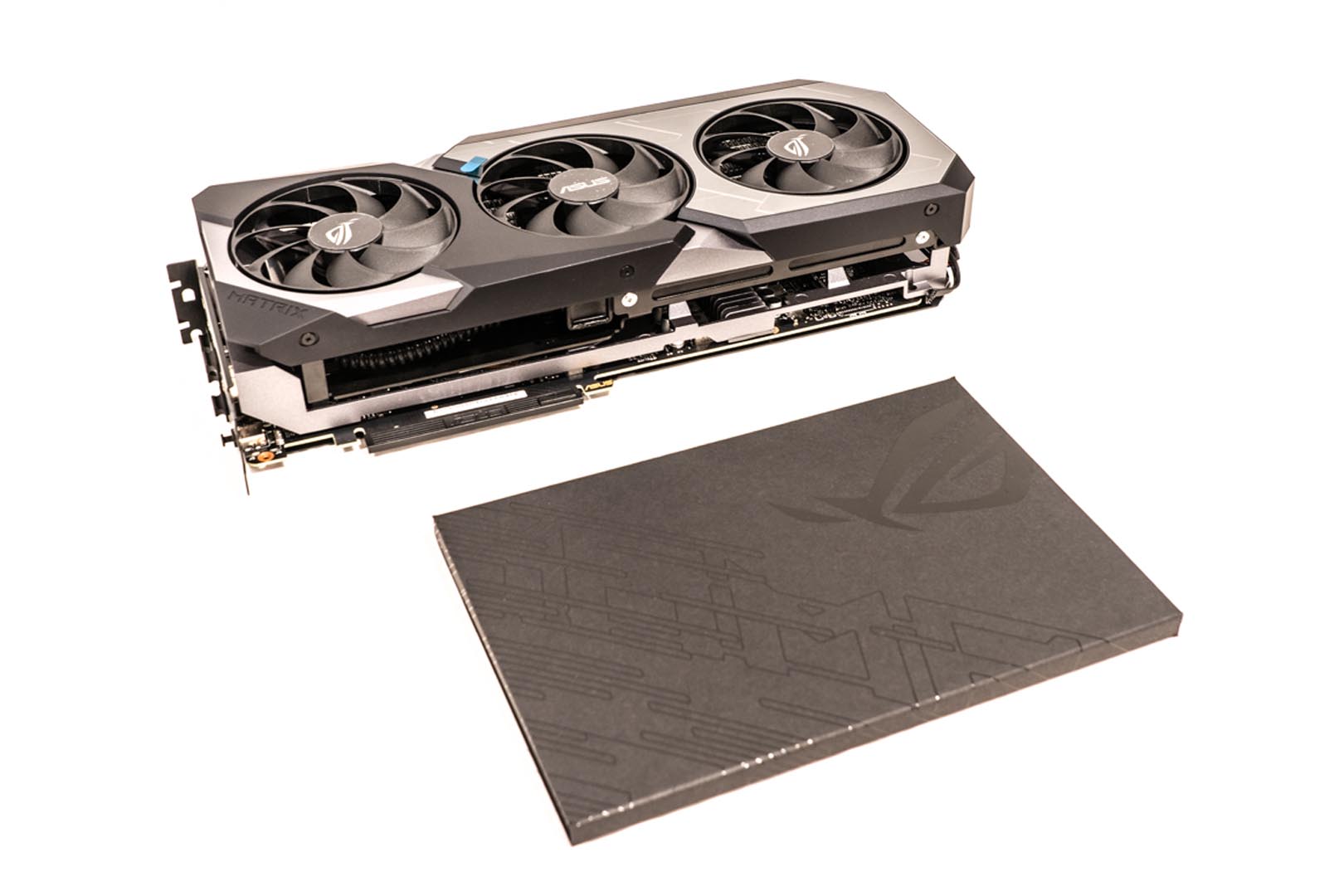
The accessory box contains the driver disk, instruction menu, ROG magic strip pack, ROG A4 sticker, and a welcome card
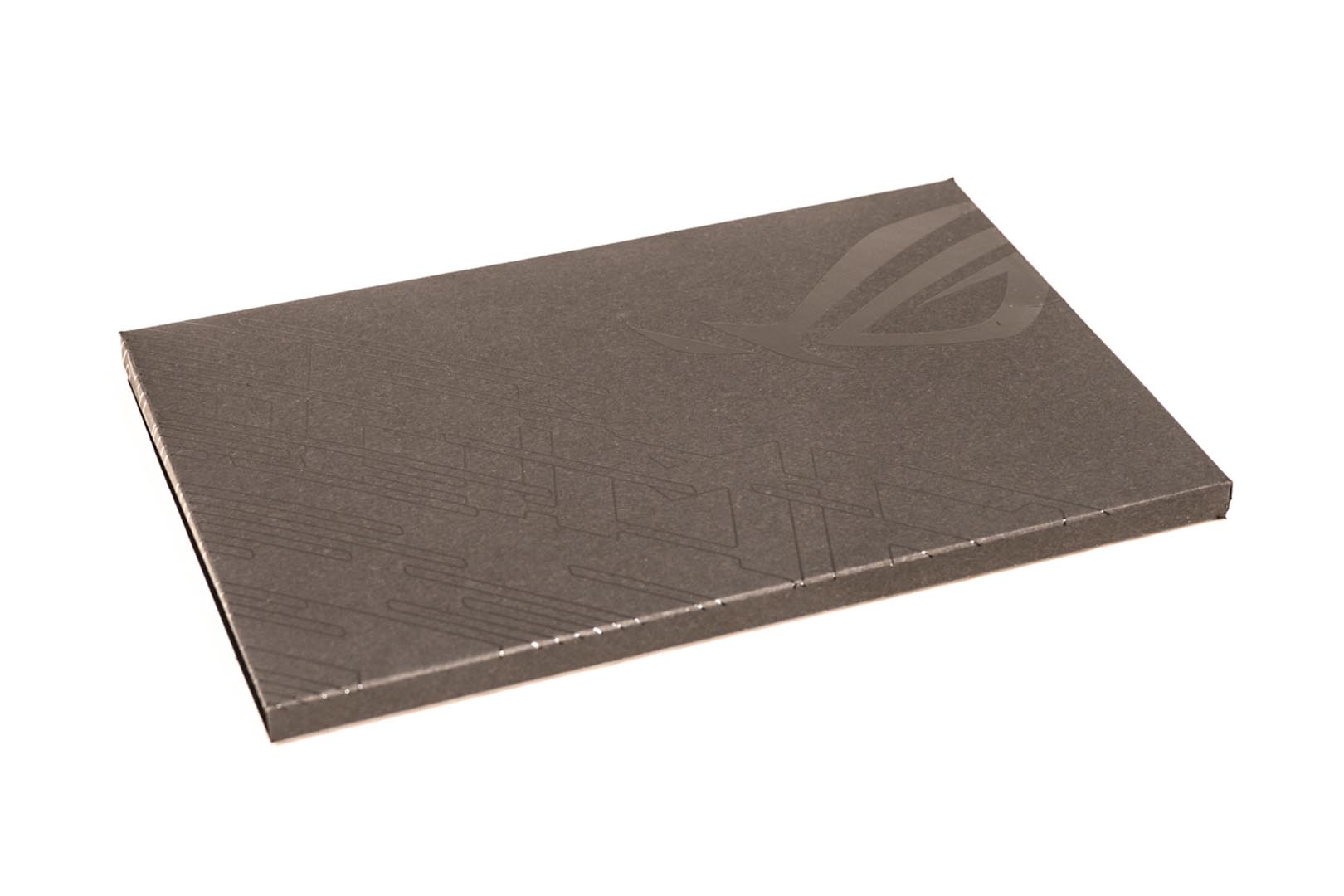

The welcome card has a brief introduction for this beast of a graphics card
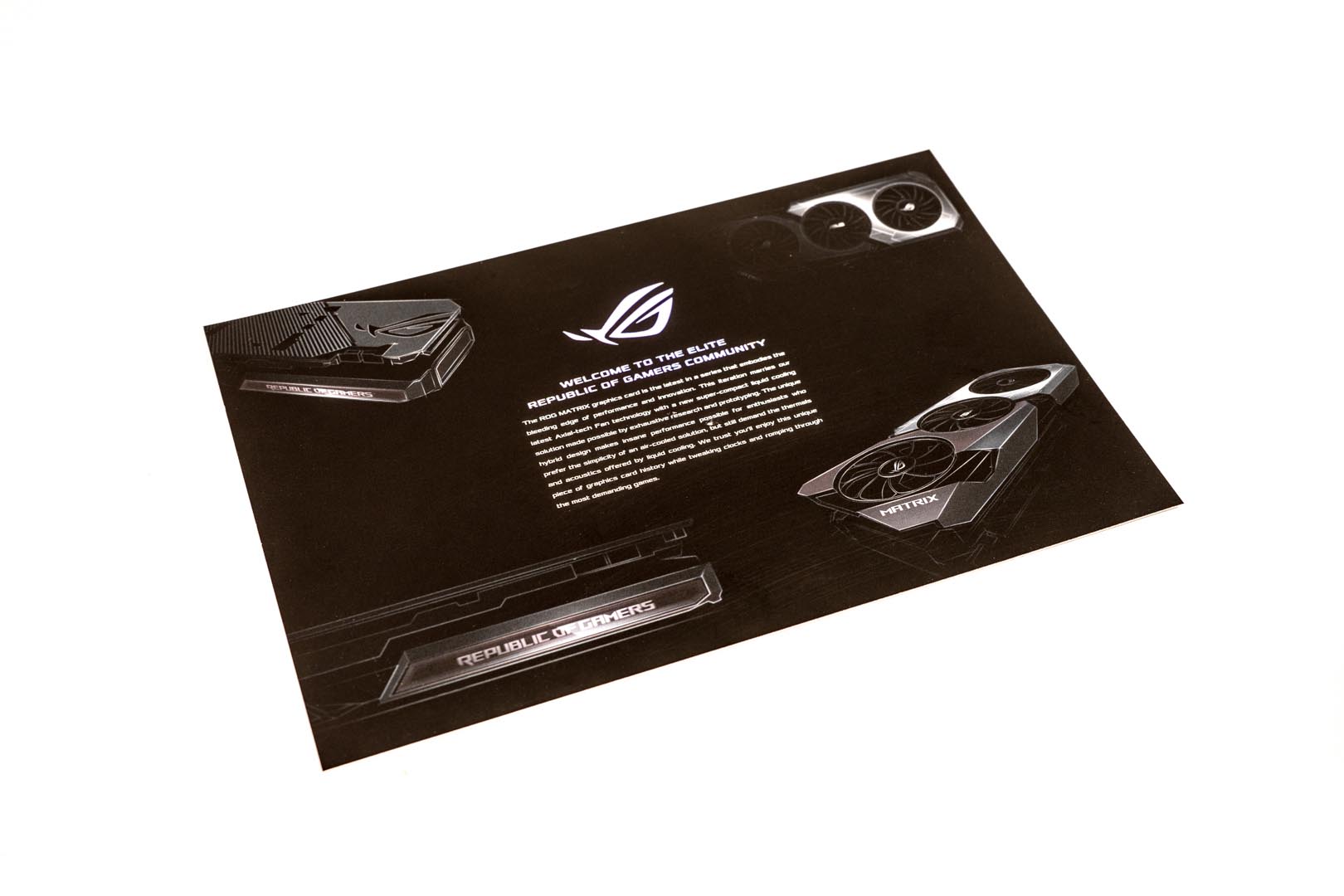
The graphics card front. Triple fan design with a mirror RGB plate with Mayan style inlay
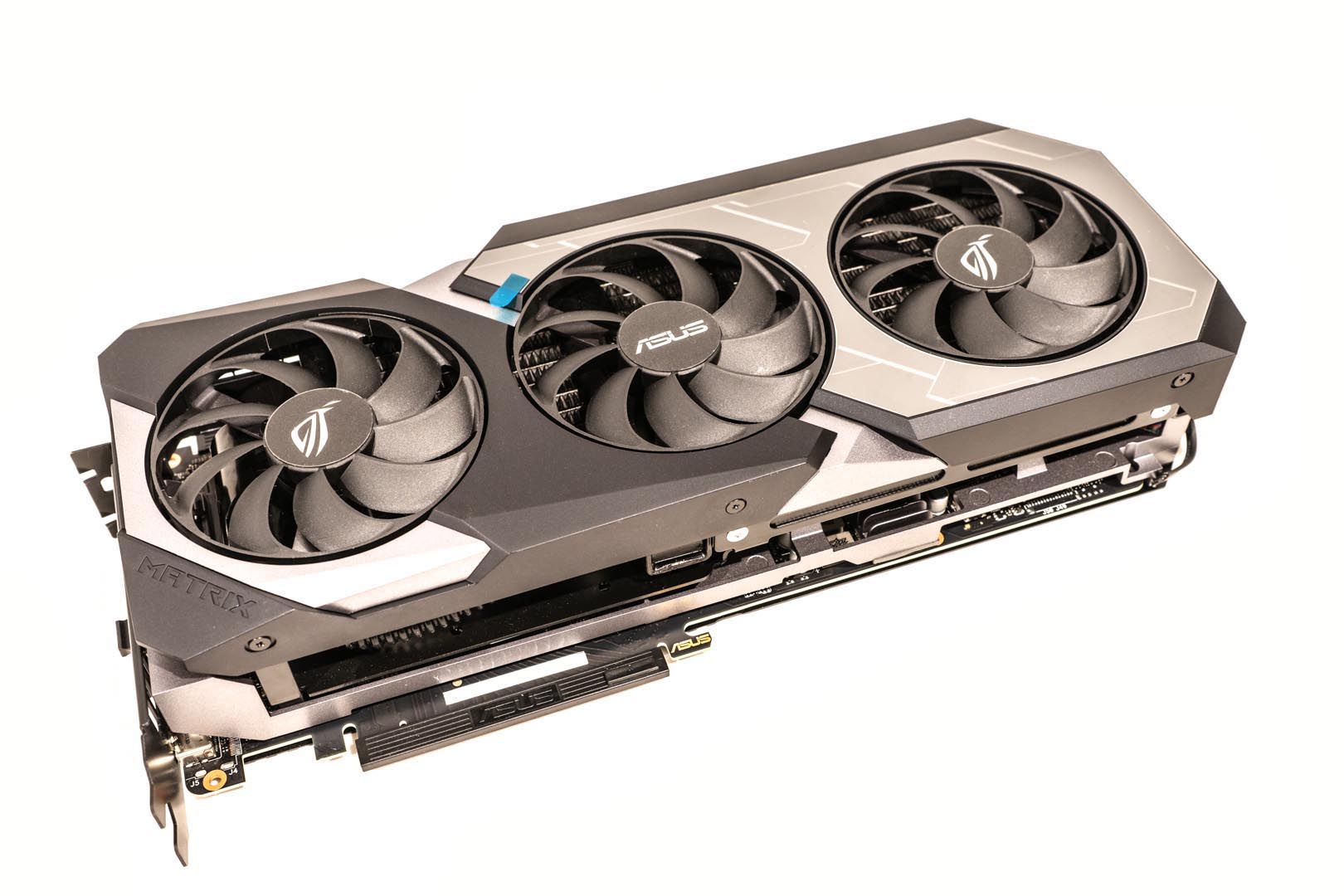
The graphics card back. The oblique groove design makes the whole back plate more solid and increases heat dispersion
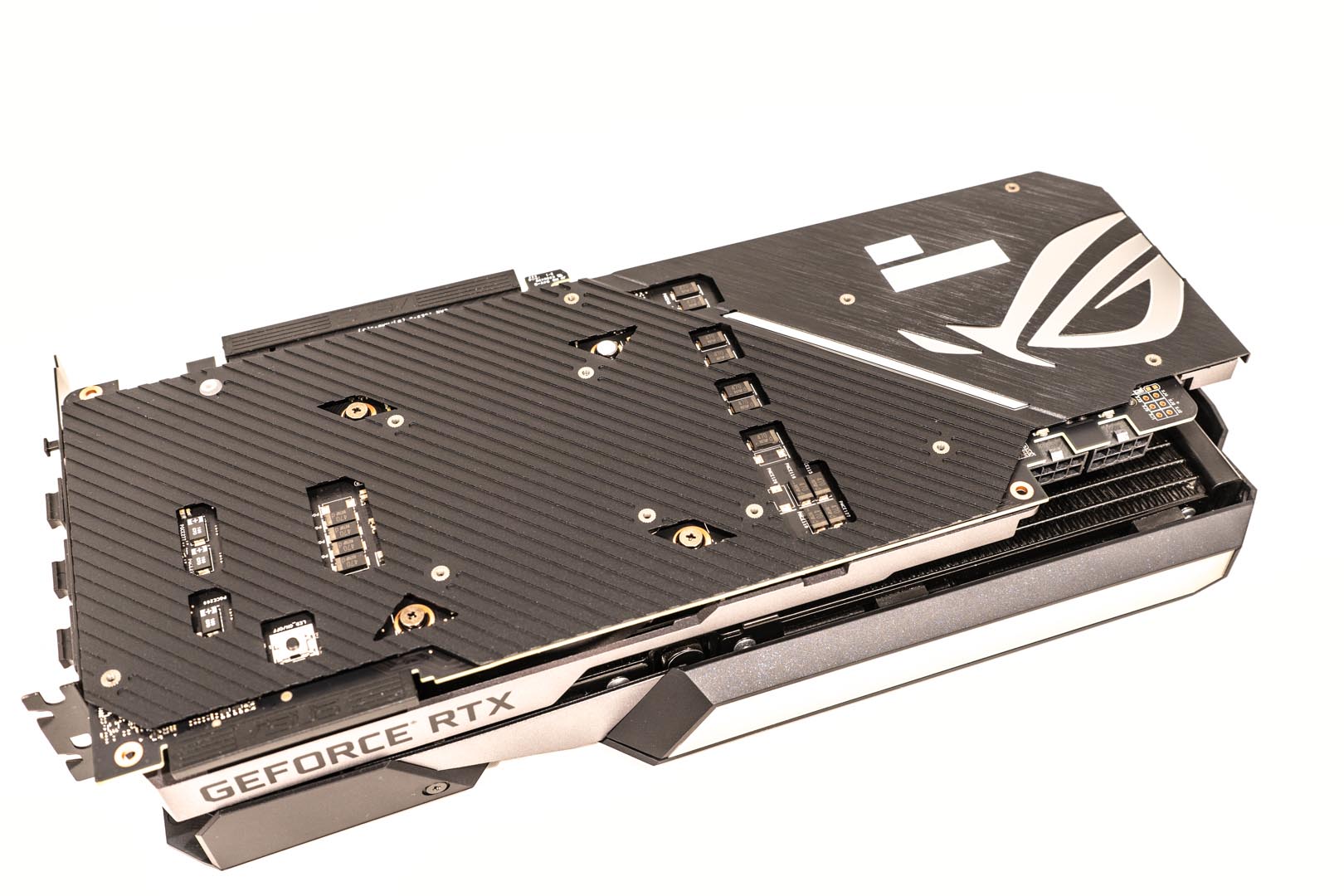
The MATRIX logo has the same design as the Thor power supply

The dual-8 pins power cord Dual design saves space and makes cable management much simpler
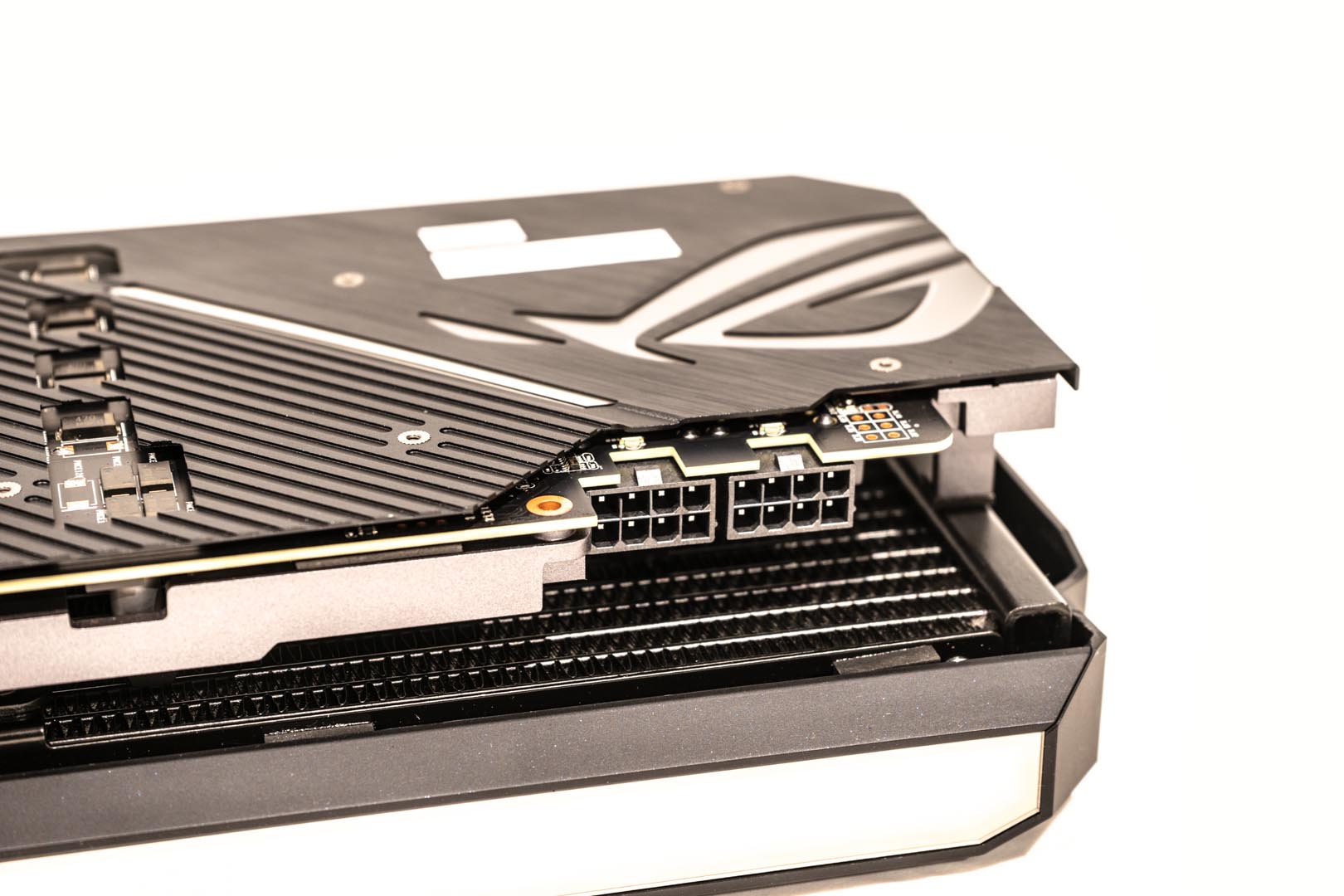
The graphics card side. There is enough space in the middle of the card and heatsink to cool the radiator, very smart design
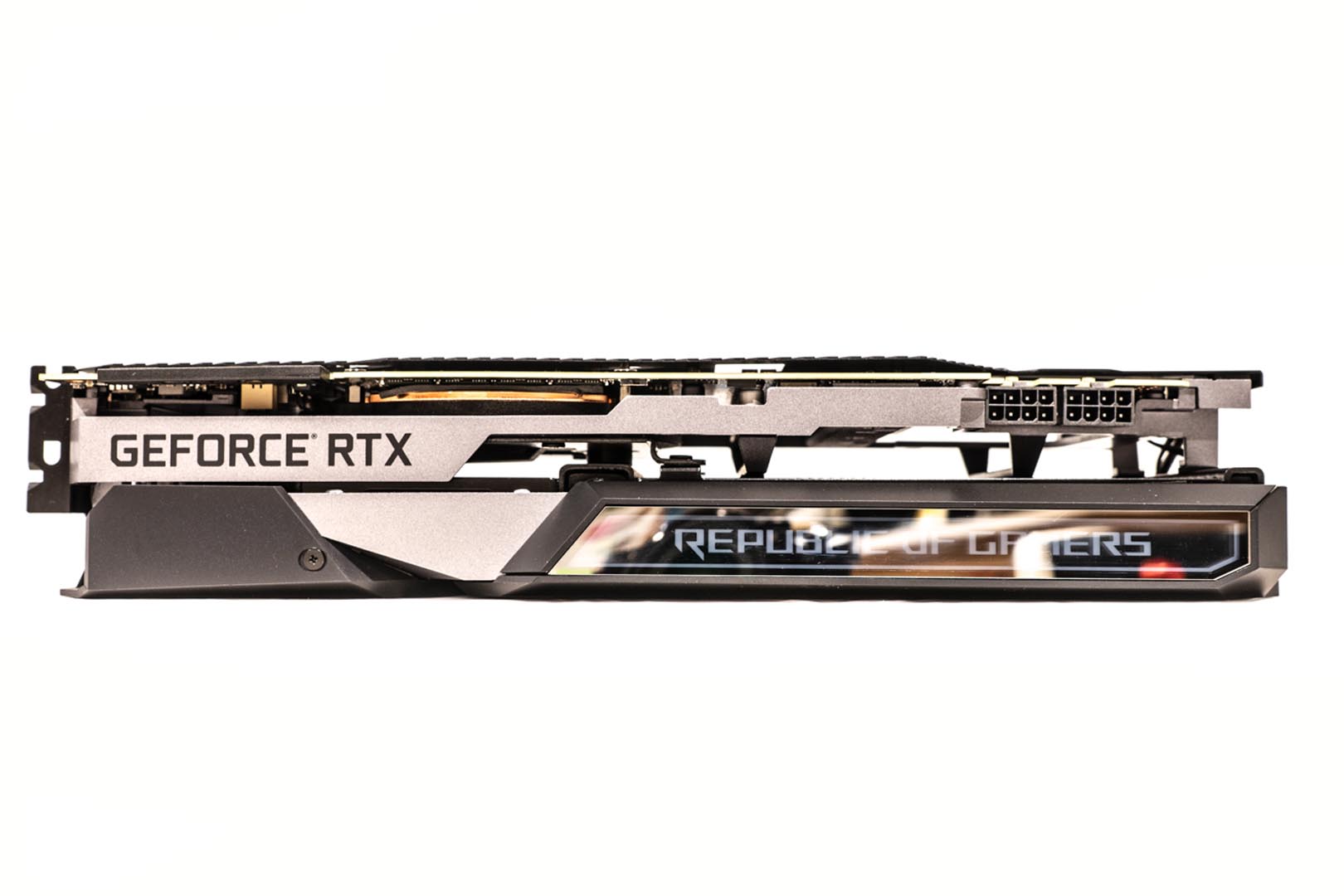
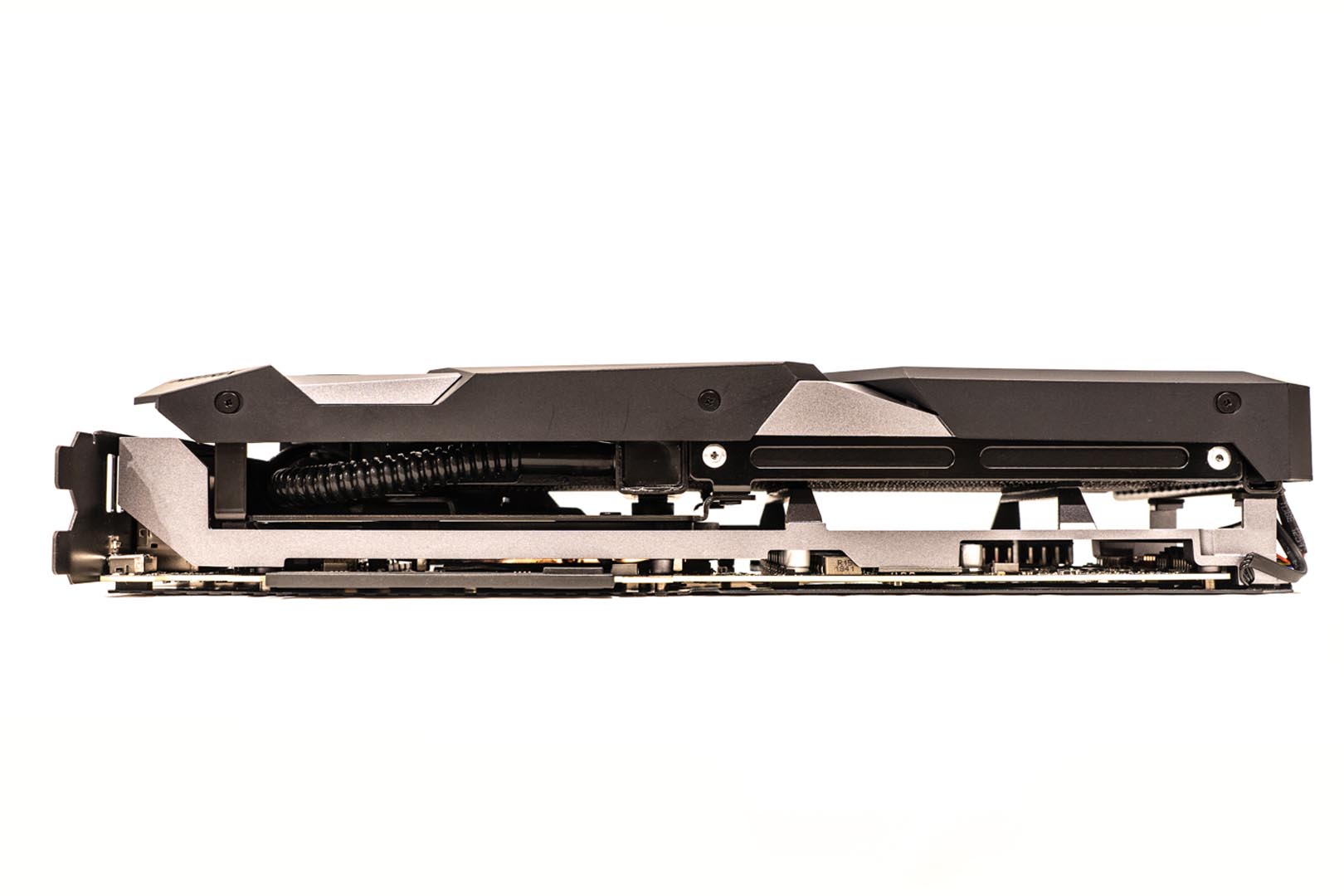
The front I/O contains 1 12V RGB port and 2 synchronised 4-pin fan connectors
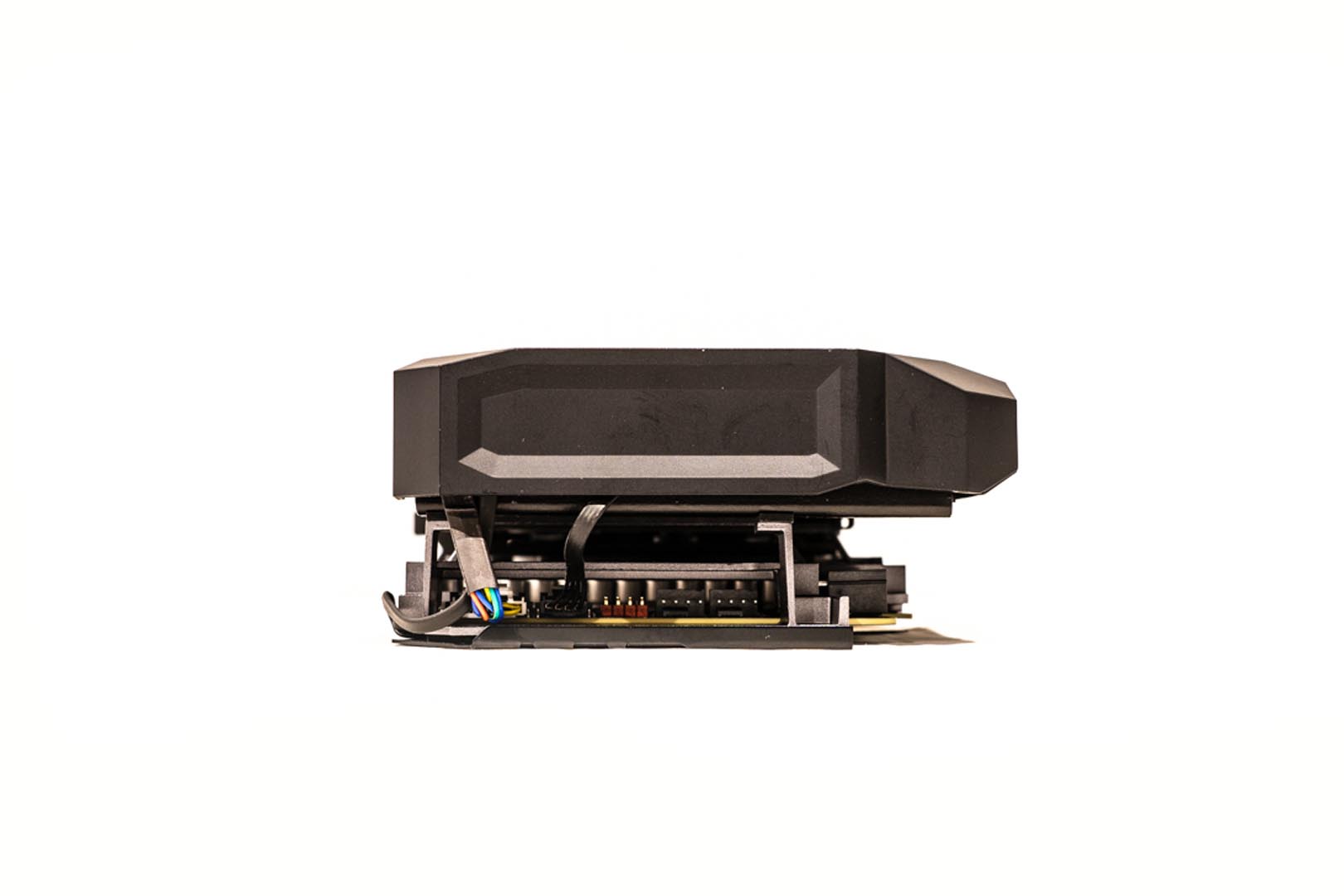
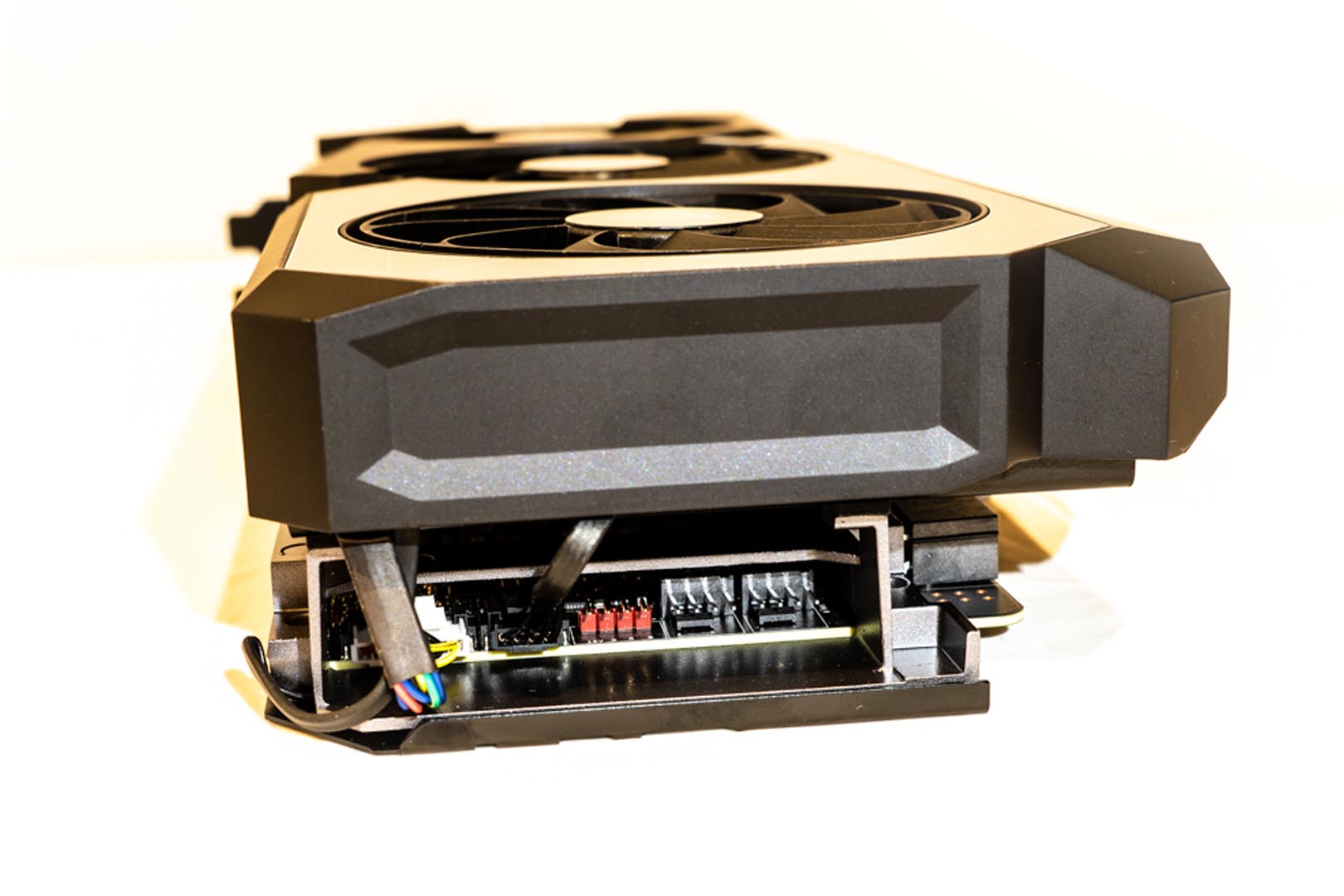
The back I/O, contains 2 DP ports, 2 HDMI ports and 1 USB-C port
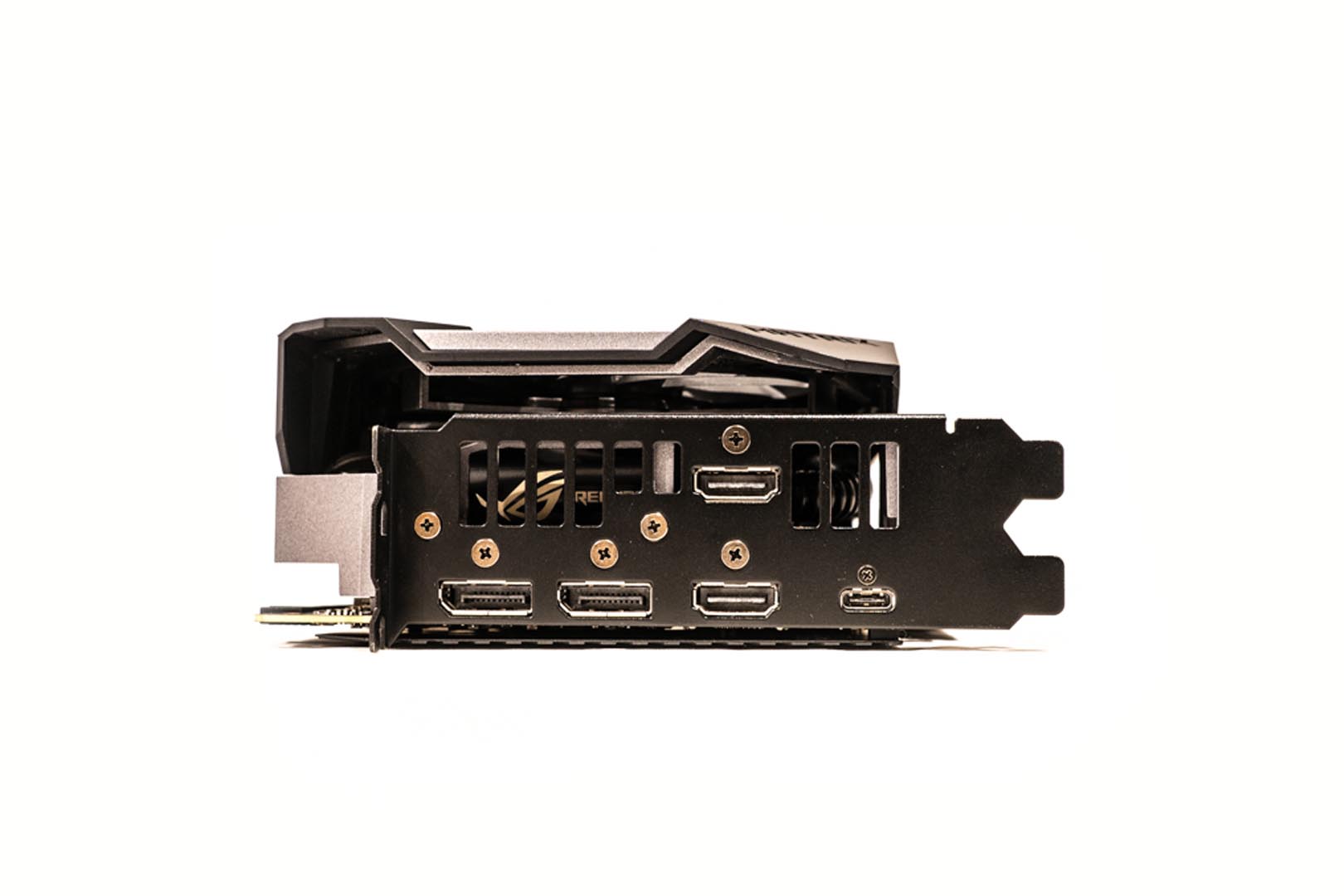
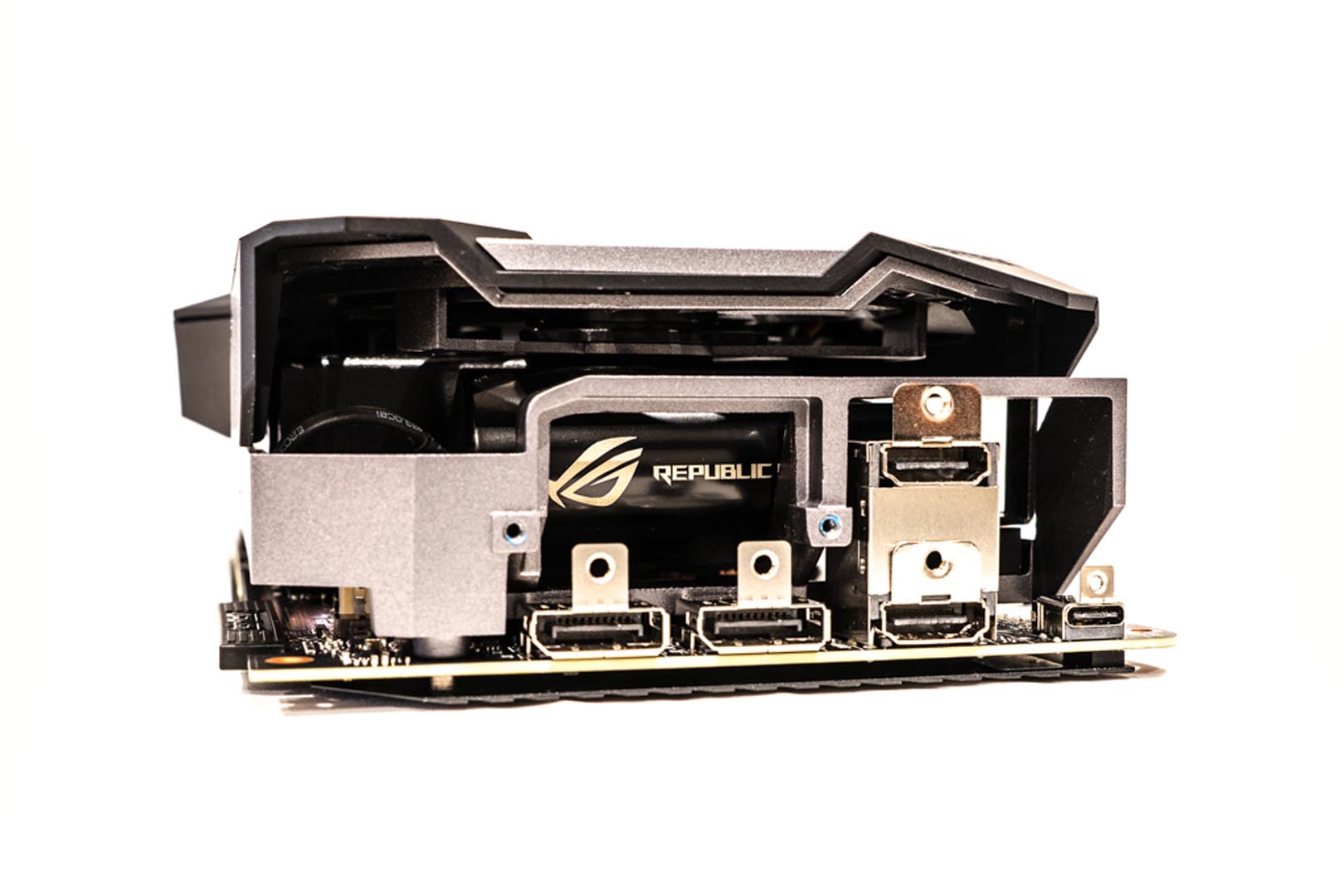
The full card thickness is around 60mm, so it’s about 3 PCI slots wide

The total weight of this graphics card is around 1.56kg
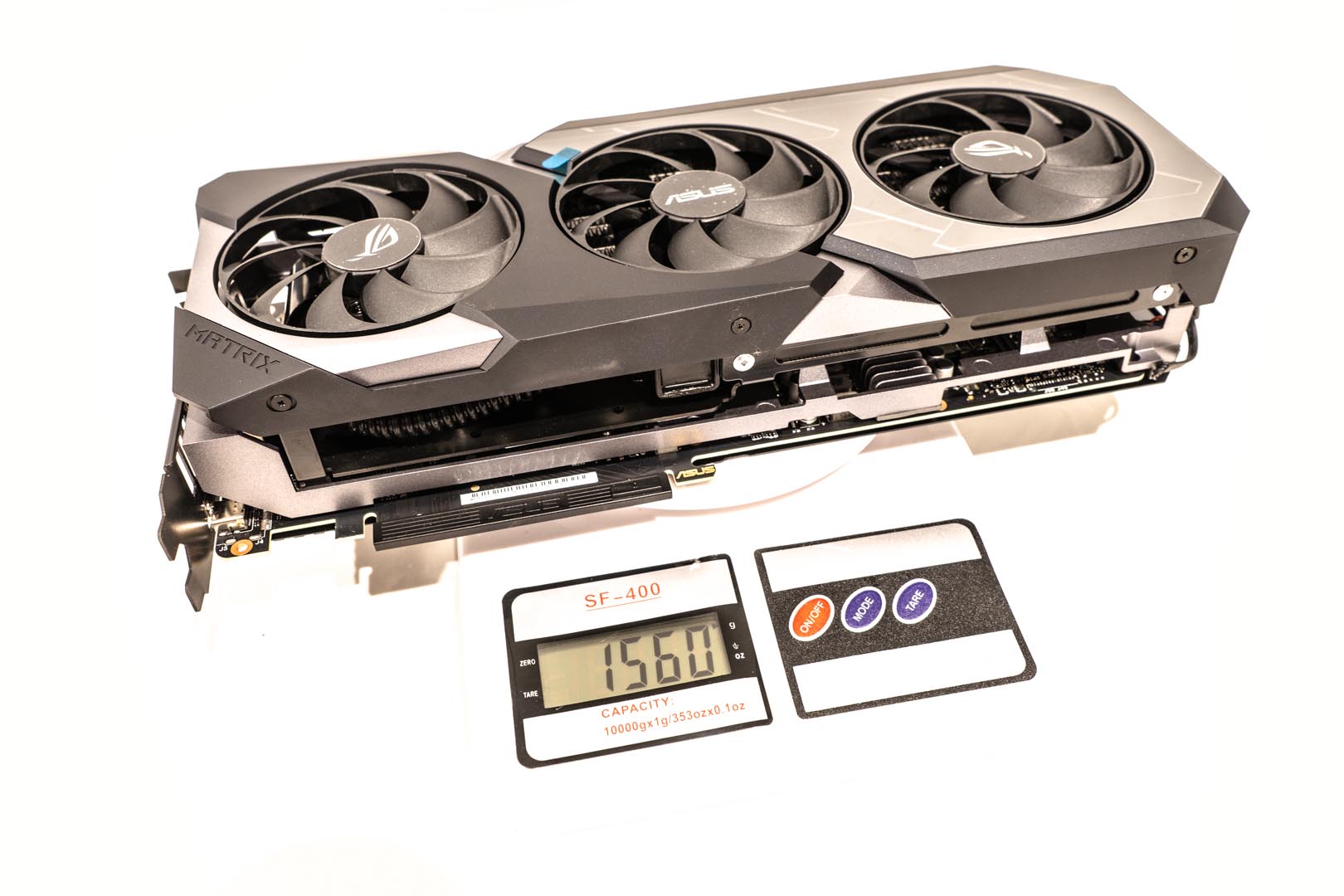
The LED switch on the back of the graphics card
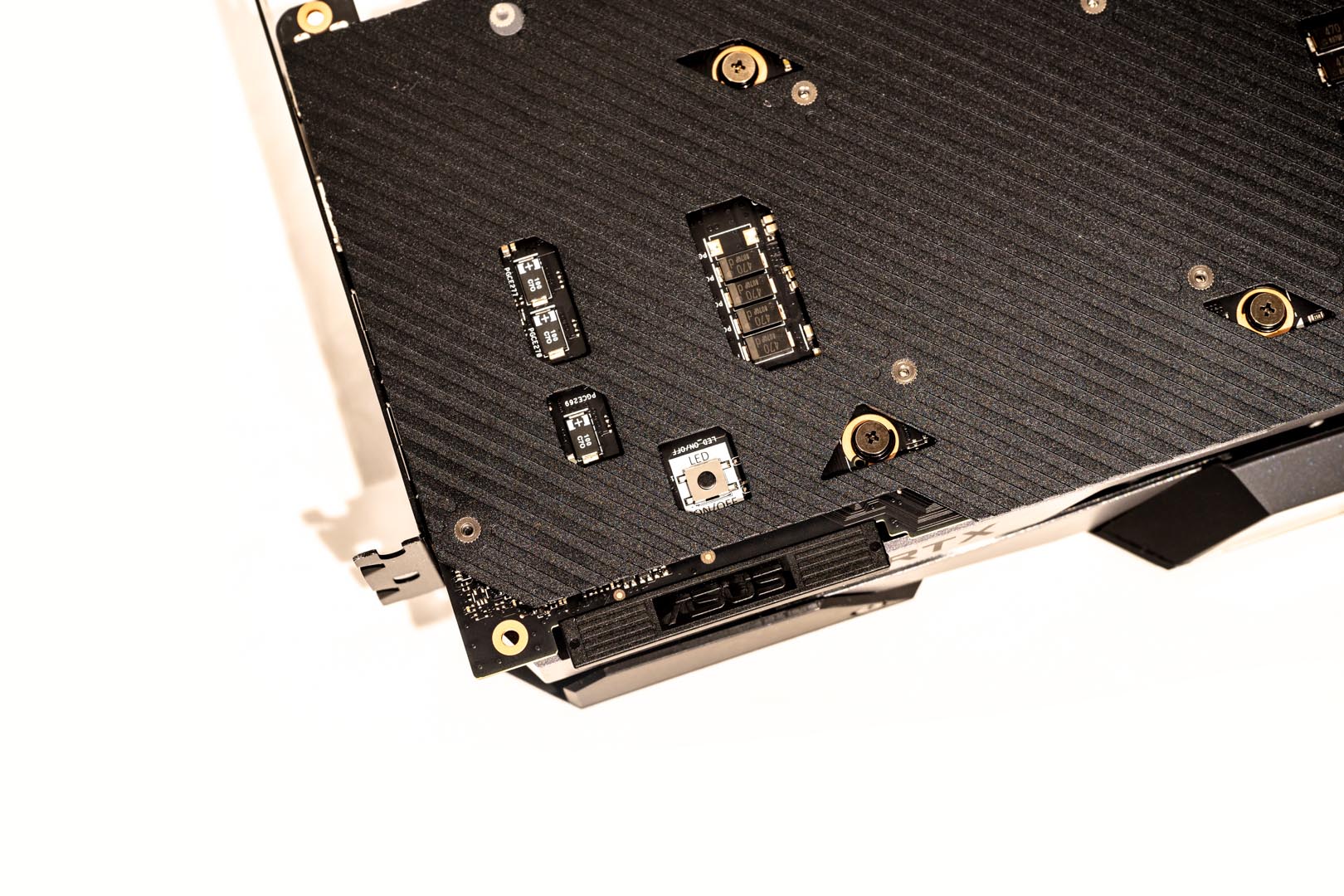
We tested this graphics card on 2 bench machines:
GRA: ASUS ROG Matrix RTX 2080TI P11G
CPU: INTEL CORE i7-7700K @ 4.50GHz
MTB: ASUS ROG MAXIMUS IX APEX
MEM: GSKILL TRIDENT Z RGB, 32GB(2x16GB) @3600MHz
SSD: SAMSUNG 960EVO 250G
PSU: CORSAIR RM1000i 1000W
CAS: LIAN-LI DK-04X
HSF: CORSAIR H100i v2 + ML120 x 8
DRV: 430.86
SYS: WIN10 64 1809
TES: GPU-Z 2.21.0 ROG | 3DMark 2.8.6578s64
GRA: ASUS ROG Matrix RTX 2080TI P11G
CPU: INTEL CORE i9-9900K @ 5.10GHz
MTB: ASUS ROG MAXIMUS XI FORMULA
MEM: GSKILL TRIDENT Z RGB, 32GB(4x8GB) @4266MHz
SSD: SAMSUNG 970PRO 512G
PSU: ASUS ROG THOR 1200W
CAS: COOLERMASTER C700P
HSF: ASUS RYUJIN360
DRV: 430.86
SYS: WIN10 64 1903
TES: GPU-Z 2.21.0 ROG | 3DMark 2.8.6578s64
3DMARK Fire Strike Extreme @ Bench machine 1 non-OC

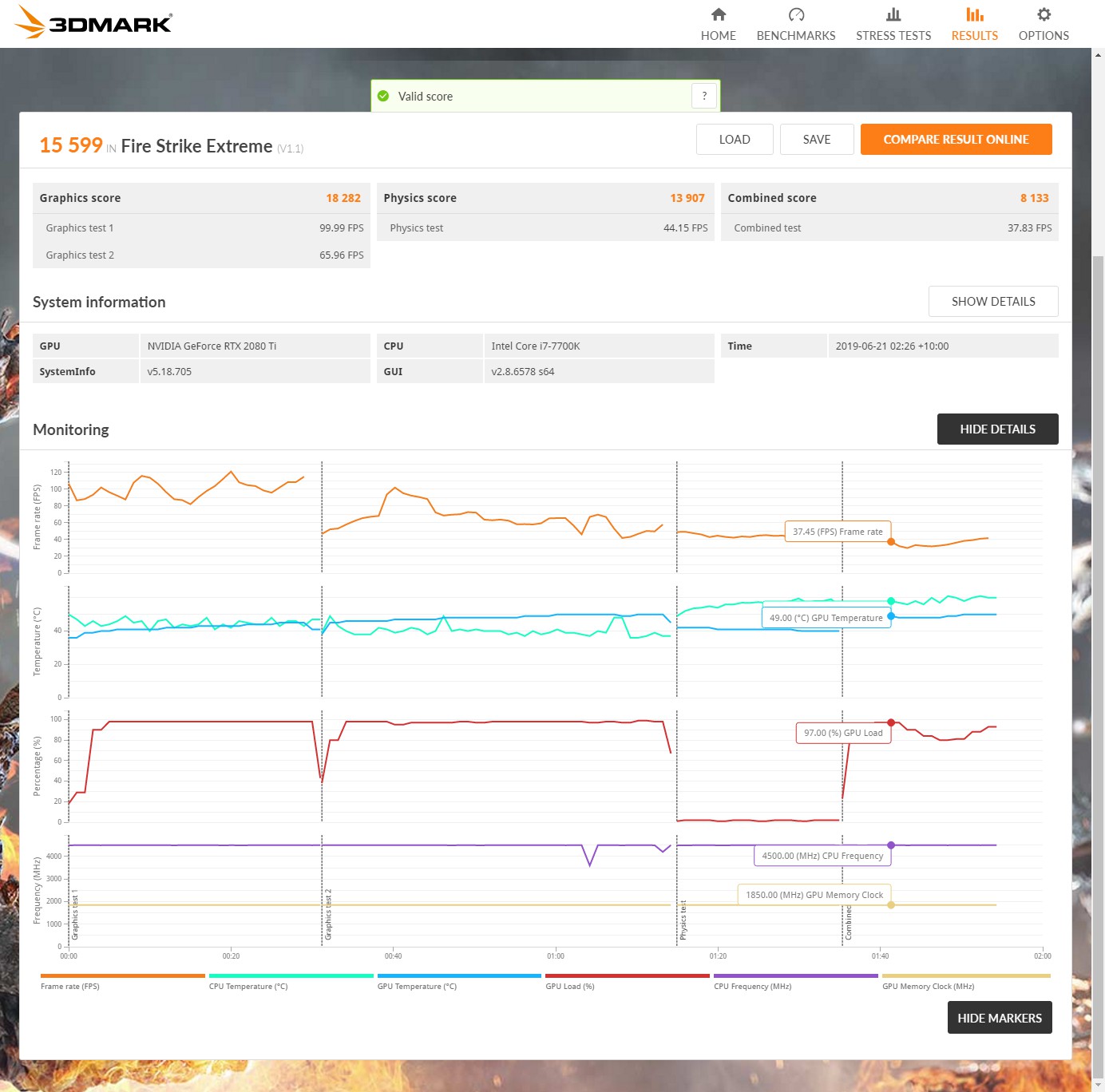
3DMARK Fire Strike Extreme @ Bench machine 1 OC

3DMARK Fire Strike Ultra @ Bench machine 1 non-OC
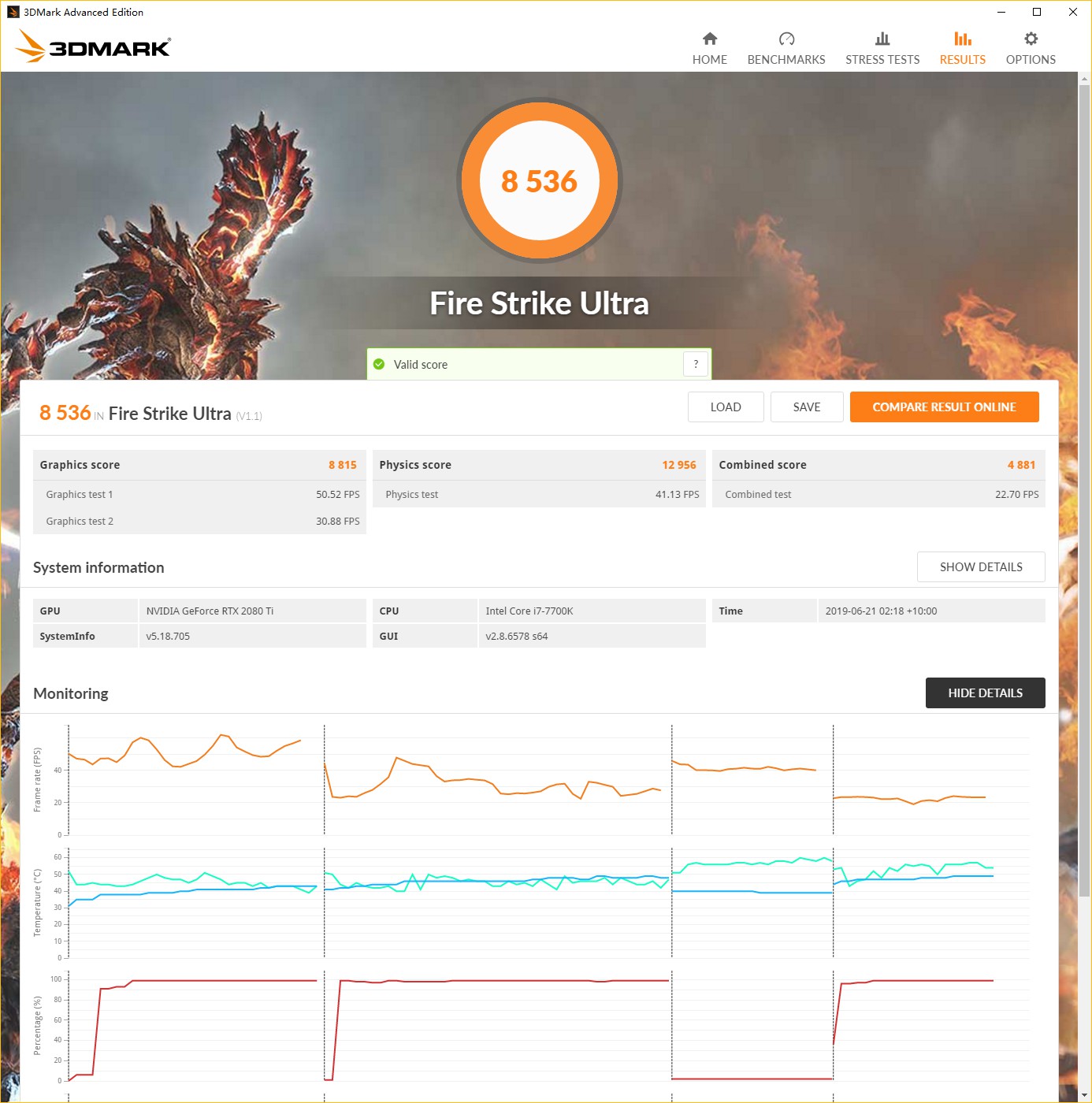
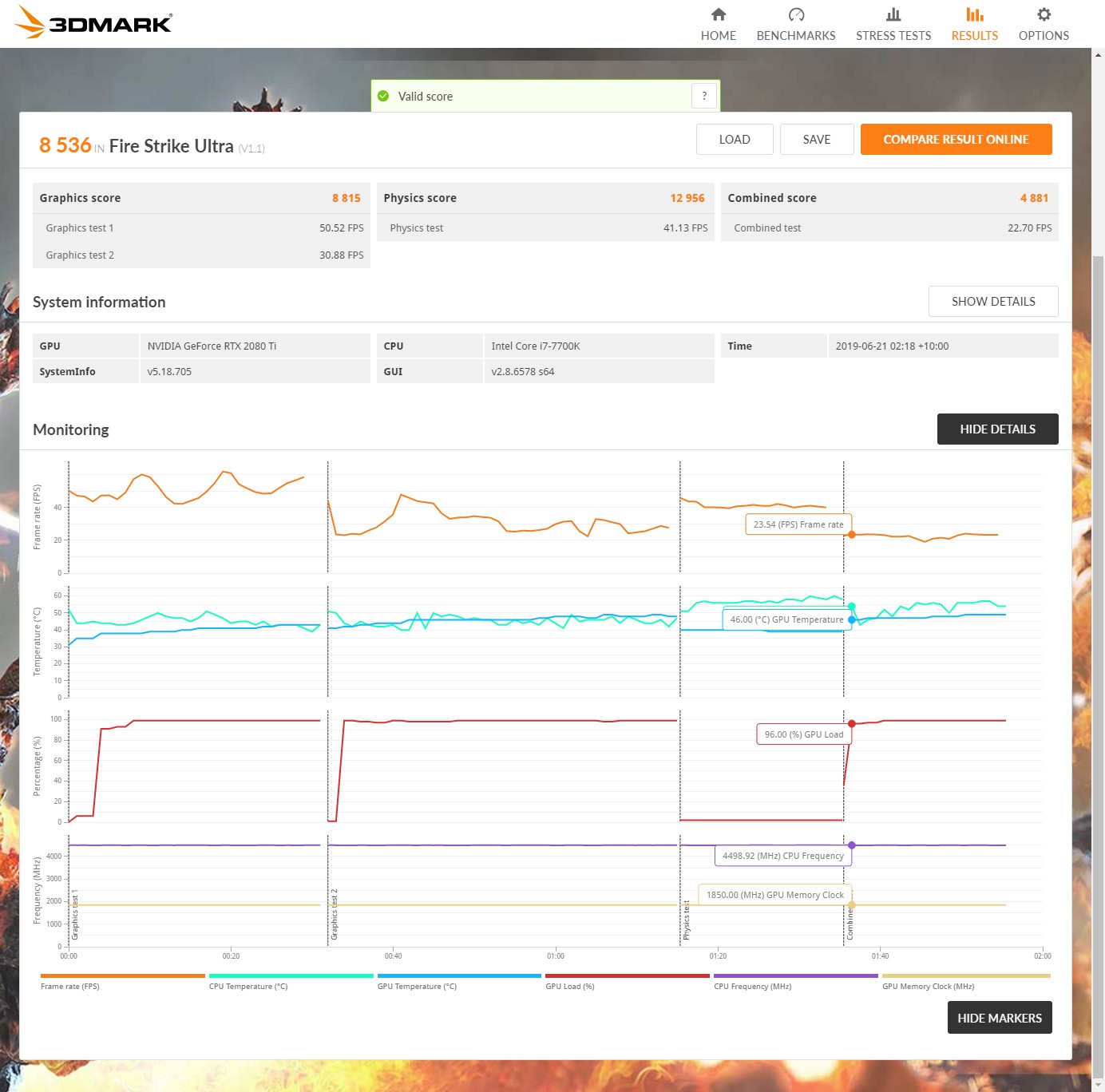
3DMARK Fire Strike Ultra @ Bench machine 1 OC

3DMARK Time Spy @ Bench machine 1 non-OC
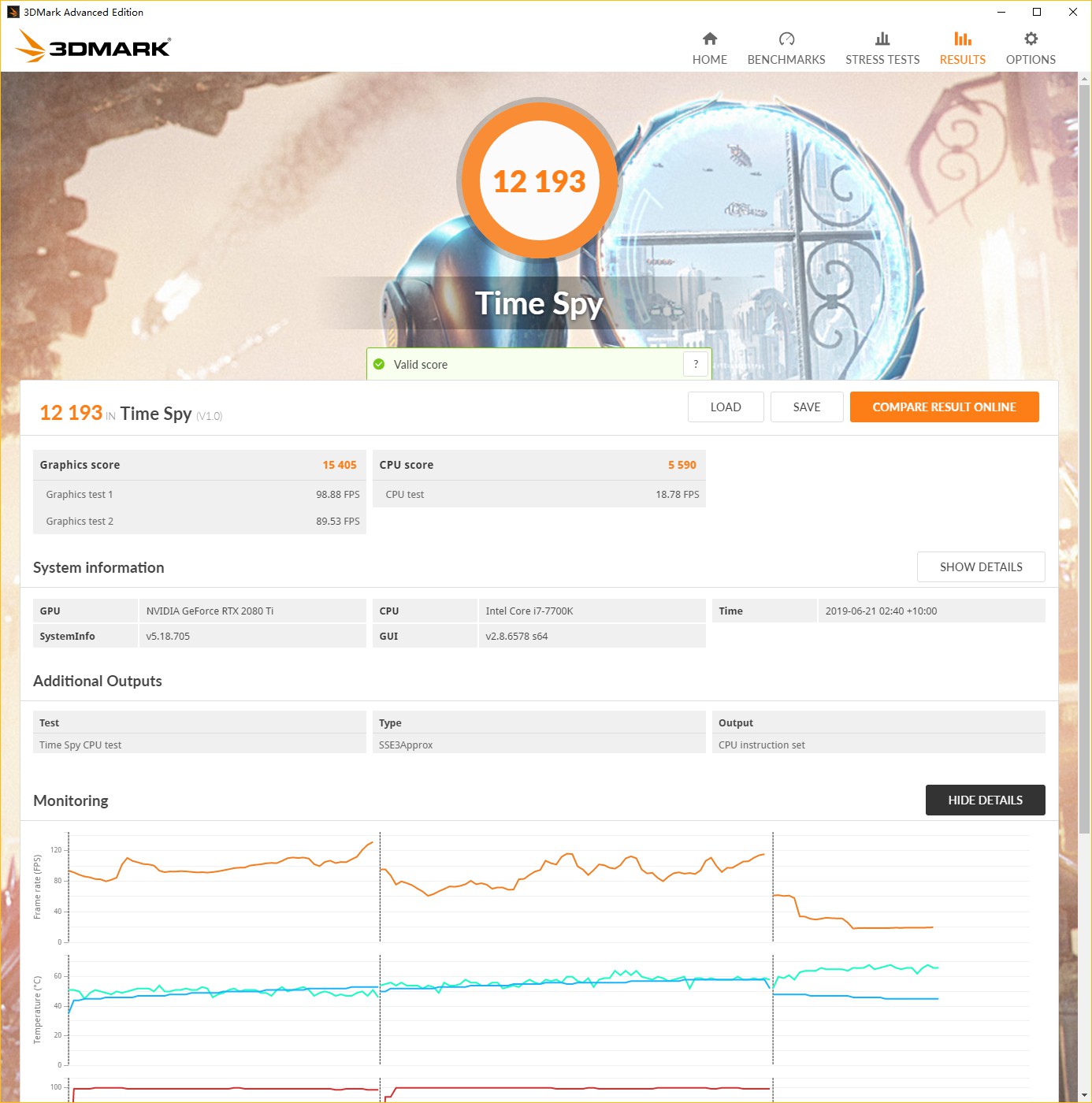
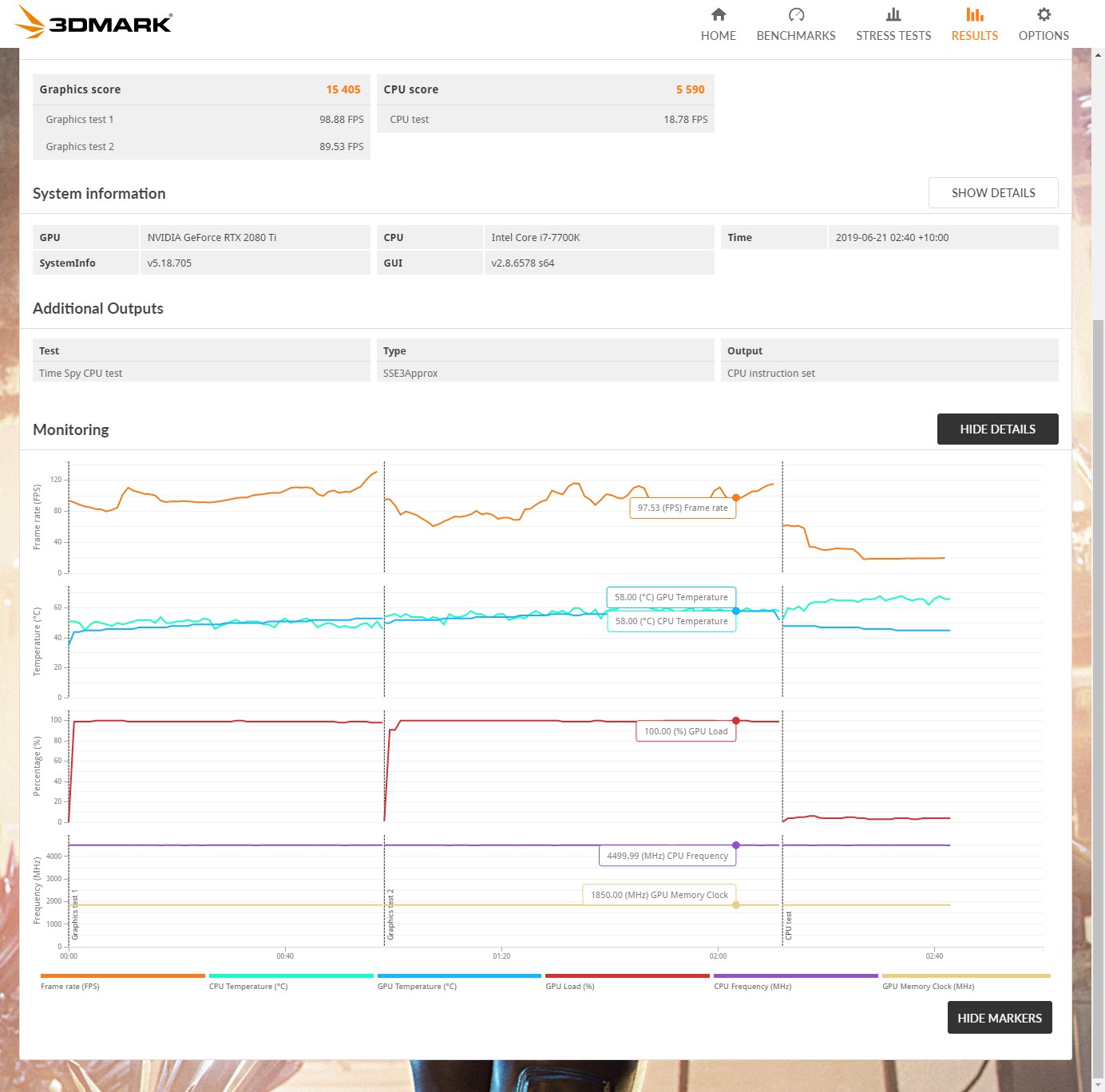
3DMARK Time Spy Extreme @ Bench machine 1 non-OC

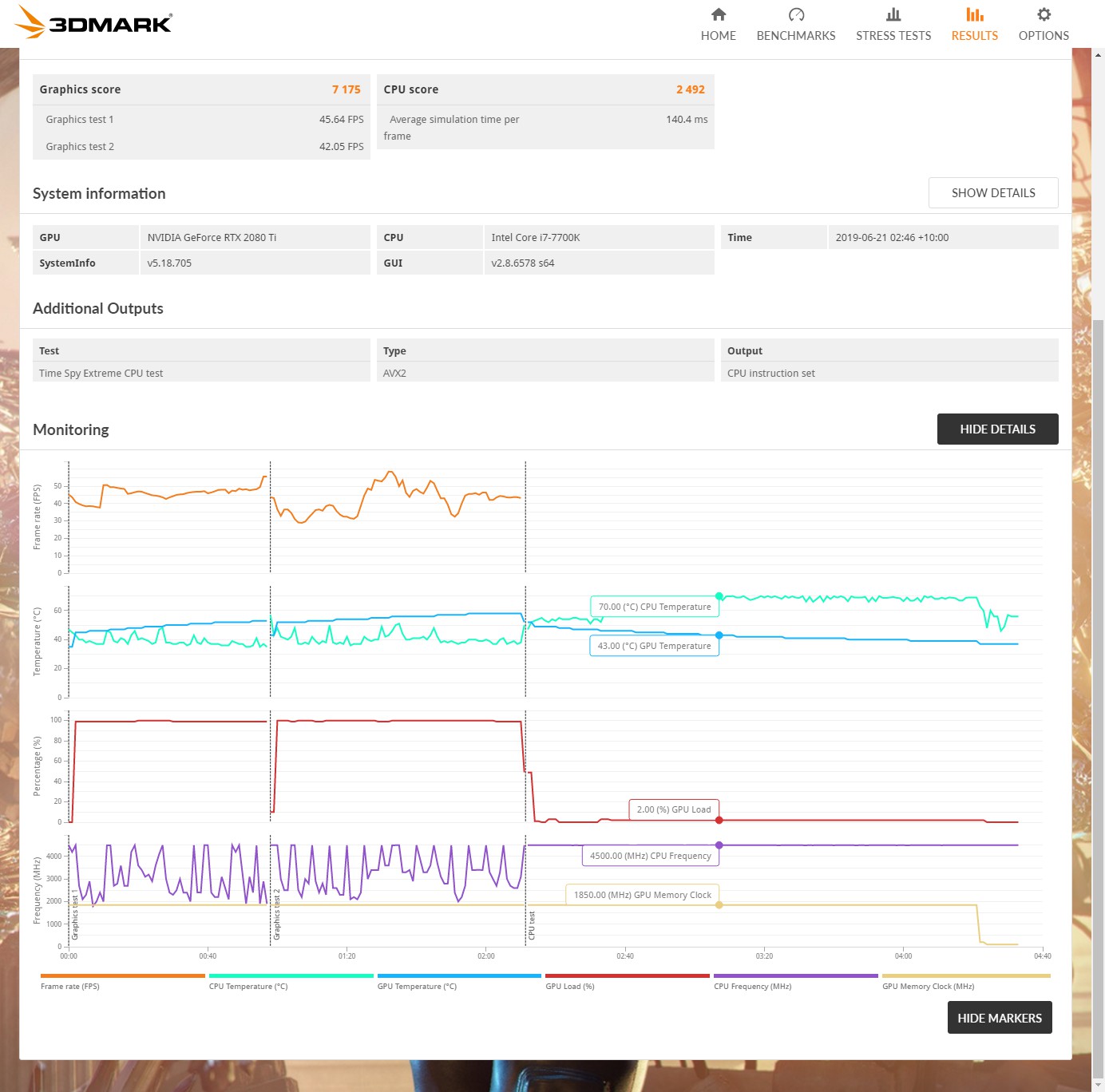
3DMARK Fire Strike Ultra @ Bench machine 2 OC

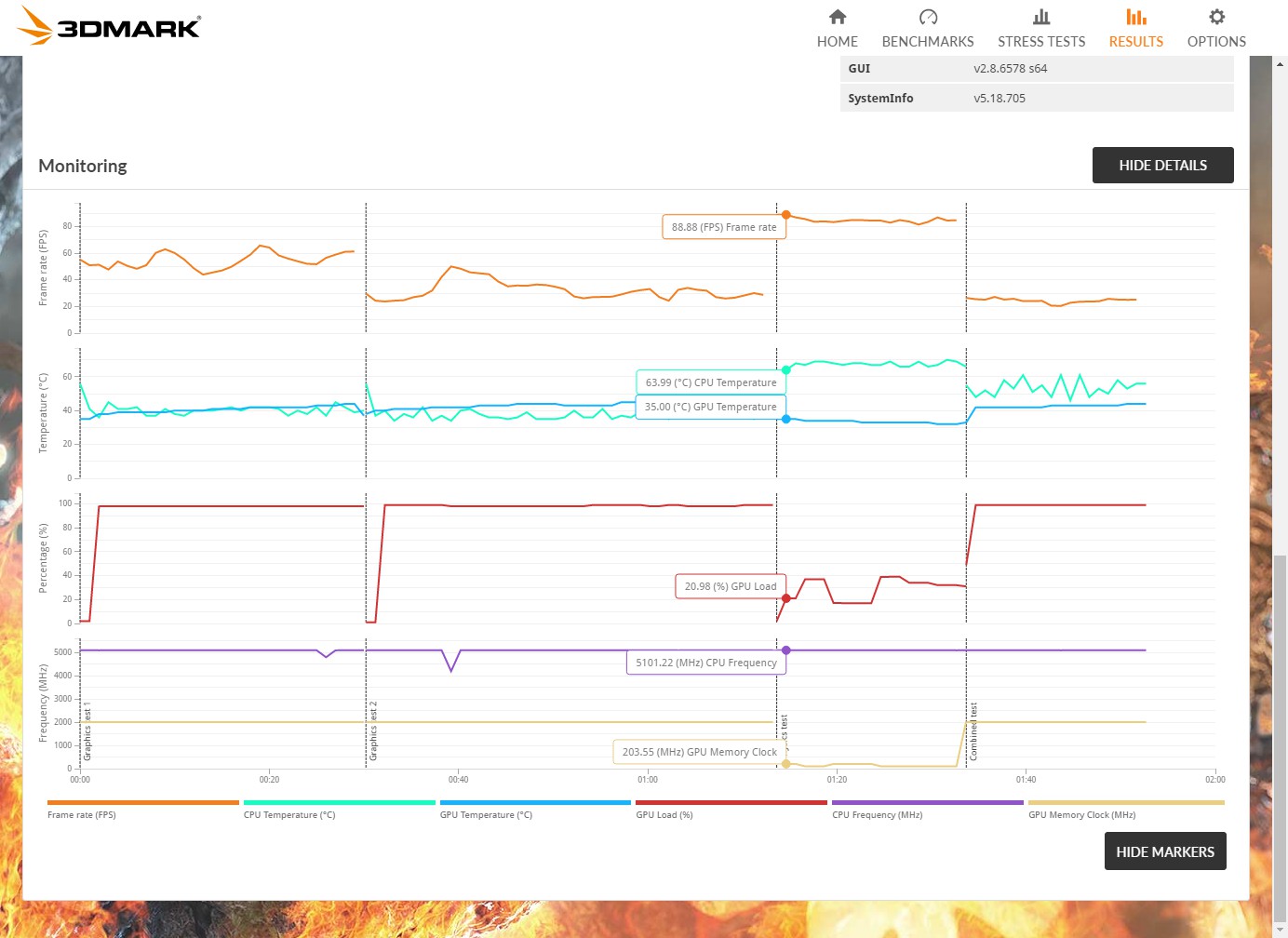
3DMARK Port Royal @ Bench machine 2 OC

Overall
Since ASUS’s VBIOS has always been very conservative. Rising the high voltage load can give a boost of over 100% in FURMARK, which will effectively eat up your power supply wattage, so make sure you have a beefy power supply. We can conclude that this card is still very easy to overclock, and there is no terrible heat consumption (less than 65 Celsius) during the whole OC process. If we want this card to go further, it may take longer to test the combinations of voltage and frequency to pull the GPU clock above 2200MHz. This is an overclockers dream after all.
Overall, this card does give us a lot of surprises. The design of the water-cooling system, the appearance of the graphics card, the special-picked chip and the superior overclocking performance make this card an outstanding performer. However, the high price seems to limit the value of this card. If you spend $100 more, you have a TITAN RTX, what would you choose?
EPIC REWARD: EDITOR’S CHOICE & DESIGN AWARD


ASUS ROG Matrix GeForce RTX™ 2080 Ti OFFICIAL WEBSITE: https://www.asus.com/us/Graphics-Cards/ROG-MATRIX-RTX2080TI-P11G-GAMING/




